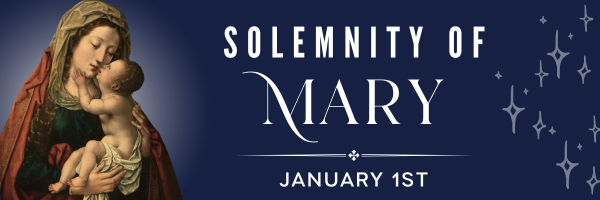We ask you, urgently: don't scroll past this
Dear readers, Catholic Online was de-platformed by Shopify for our pro-life beliefs. They shut down our Catholic Online, Catholic Online School, Prayer Candles, and Catholic Online Learning Resources essential faith tools serving over 1.4 million students and millions of families worldwide. Our founders, now in their 70's, just gave their entire life savings to protect this mission. But fewer than 2% of readers donate. If everyone gave just $5, the cost of a coffee, we could rebuild stronger and keep Catholic education free for all. Stand with us in faith. Thank you.Help Now >
St. Peter
Facts
Patron: of fishermen, net makers, and ship builders
Death: 64
Author and Publisher - Catholic Online
Printable Catholic Saints PDFs
Shop St. Peter

Peter, who was also known as Simon Peter of Cephas, is considered the first Pope. Despite his papacy, Peter had humble beginnings and became one of the Twelve Apostles of Jesus. He was ordained by Jesus in the "Rock of My Church" written in Matthew 16:17-18, which says, "Jesus replied, 'Simon son of Jonah, you are a blessed man!
Because it was no human agency that revealed this to you but my Father in heaven. So I now say to you: You are Peter and on this rock I will build my community. And the gates of the underworld can never overpower it.'"
Peter was a native of Bethsaida, near Lake Tiberias and was the son of Jonah. He and his brother Andrew were fishermen on Lake Genesareth. The Bible chronicles when the brothers met Jesus in Luke chapter 5, which reads:
"Now it happened that he was standing one day by the Lake of Gennesaret, with the crowd pressing round him listening to the word of God, when he caught sight of two boats at the water's edge. The fishermen had got out of them and were washing their nets. He got into one of the boats -- it was Simon's -- and asked him to put out a little from the shore. Then he sat down and taught the crowds from the boat.
When he had finished speaking he said to Simon, 'Put out into deep water and pay out your nets for a catch.' Simon replied, 'Master, we worked hard all night long and caught nothing, but if you say so, I will pay out the nets.' And when they had done this they netted such a huge number of fish that their nets began to tear, so they signaled to their companions in the other boat to come and help them; when these came, they filled both boats to sinking point.
When Simon Peter saw this he fell at the knees of Jesus saying, 'Leave me, Lord; I am a sinful man.' For he and all his companions were completely awestruck at the catch they had made; so also were James and John, sons of Zebedee, who were Simon's partners. But Jesus said to Simon, 'Do not be afraid; from now on it is people you will be catching.' Then, bringing their boats back to land they left everything and followed him."
Just like that, Peter followed Jesus and his life was changed forever. Though he was one of the first disciples called to follow Jesus and eventually became the spokesman for the group, Peter is known for his "little faith."
In Matthew 14, Jesus and his disciples came ashore, where a large crowd waited. Jesus healed the sick and by the end of the day, his disciples told him to tell everyone to go to the villages for food but Jesus performed a miracle and made five loaves of bread and two fish feed the group of five-hundred people. Following the miracle, Jesus told the disciples to take their boat to the other side of a nearby river while he sent the crowds away.
After he bid farewell to the throngs of people, he prayed by himself in the hills. As he prayed, the boat the disciples were on was experiencing rough waves and "In the fourth watch of the night," Jesus approached their boat as he walked on the water. When his disciples spied Jesus walking on the water, they were afraid but Jesus called to them and said, "Courage! It's me! Don't be afraid." Peter answered "Lord ... if it is you, tell me to come to you across the water."
Jesus told him to come so Peter began to walk toward Jesus on the surface of the water. It wasn't until he noticed the wind that he began to fear and cried "Lord ... save me!" Jesus touched him and said, "You have so little faith ... why did you doubt?"
This is one of many stories involving Peter and Jesus. Another famous story is Peter's attempt to save Jesus from the soldiers who came to take Him to his doom. As described in John 18:10-12, "Simon Peter, who had a sword, drew it and struck the high priest's servant, cutting off his right ear. The servant's name was Malchus. Jesus said to Peter, 'Put your sword back in its scabbard; am I not to drink the cup that the Father has given me?' The cohort and its tribune and the Jewish guards seized Jesus and bound him."
Following the failed attempt to save Jesus, Peter was recorded denying Jesus, which The Savior foretold during the Last Supper in Mark 14:18-31:
"And while they were at table eating, Jesus said, 'In truth I tell you, one of you is about to betray me, one of you eating with me.' They were distressed and said to him, one after another, 'Not me, surely?' He said to them, 'It is one of the Twelve, one who is dipping into the same dish with me. Yes, the Son of man is going to his fate, as the scriptures say he will, but alas for that man by whom the Son of man is betrayed! Better for that man if he had never been born.'
"And as they were eating he took bread, and when he had said the blessing he broke it and gave it to them. 'Take it,' he said, 'this is my body.' Then he took a cup, and when he had given thanks he handed it to them, and all drank from it, and he said to them, 'This is my blood, the blood of the covenant, poured out for many. In truth I tell you, I shall never drink wine any more until the day I drink the new wine in the kingdom of God.'
"After the psalms had been sung they left for the Mount of Olives. And Jesus said to them, 'You will all fall away, for the scripture says: I shall strike the shepherd and the sheep will be scattered; however, after my resurrection I shall go before you into Galilee.'
"Peter said, 'Even if all fall away, I will not.' And Jesus said to him, 'In truth I tell you, this day, this very night, before the cock crows twice, you will have disowned me three times.' But he repeated still more earnestly, 'If I have to die with you, I will never disown you.' And they all said the same."
Regardless of his claims, Peter did deny Christ three times. His denials were recorded in Mark 14:66-72:
"While Peter was down below in the courtyard, one of the high priest's servant-girls came up. She saw Peter warming himself there, looked closely at him and said, 'You too were with Jesus, the man from Nazareth.' But he denied it. 'I do not know, I do not understand what you are talking about,' he said. And he went out into the forecourt, and a cock crowed.
"The servant-girl saw him and again started telling the bystanders, 'This man is one of them.' But again he denied it. A little later the bystanders themselves said to Peter, 'You are certainly one of them! Why, you are a Galilean.' But he started cursing and swearing, 'I do not know the man you speak of.'
"And at once the cock crowed for the second time, and Peter recalled what Jesus had said to him, 'Before the cock crows twice, you will have disowned me three times.' And he burst into tears."
Matthew 26:69-75 and John 18:17-27 also tell the story of Peter disowning Jesus three times. Following Christ's crucifixion and resurrection, it was Peter who first entered the empty tomb. It was described in Luke 24:12 that when Peter heard Mary of Magdala, Joanna, and Mary, the mother of James, claim Jesus' tomb was empty, he "went off to the tomb, running. He bent down and looked in and saw the linen cloths but nothing else; he then went back home, amazed at what had happened."
1 Corinthians 15:3-7 describes how Jesus resurrected and appeared before Peter first. "The tradition I handed on to you in the first place, a tradition which I had myself received was that Christ died for our sins, in accordance with the scriptures, and that he was buried; and that on the third day, he was raised to life, in accordance with the scriptures; and that he appeared to [Peter of] Cephas; and later to the Twelve; and next he appeared to more than five hundred of the brothers at the same time, most of whom are still with us, though some have fallen asleep; then he appeared to James, and then to all the apostles."
Following his resurrection, Christ came before his disciples several times. John:21:12-23 describes an instance when Peter is given three chances to admit his love for Jesus, and each time he says he does.
"Jesus said to them, 'Come and have breakfast.' None of the disciples was bold enough to ask, 'Who are you?' They knew quite well it was the Lord. Jesus then stepped forward, took the bread and gave it to them, and the same with the fish.
"This was the third time that Jesus revealed himself to the disciples after rising from the dead. When they had eaten, Jesus said to Simon Peter, 'Simon son of John, do you love me more than these others do?' He answered, 'Yes, Lord, you know I love you.' Jesus said to him, 'Feed my lambs.'
"A second time he said to him, 'Simon son of John, do you love me?' He replied, 'Yes, Lord, you know I love you.' Jesus said to him, 'Look after my sheep.' Then he said to him a third time, 'Simon son of John, do you love me?' Peter was hurt that he asked him a third time, 'Do you love me?' and said, 'Lord, you know everything; you know I love you.' Jesus said to him, 'Feed my sheep.
"In all truth I tell you, when you were young you put on your own belt and walked where you liked; but when you grow old you will stretch out your hands, and somebody else will put a belt round you and take you where you would rather not go.'
"In these words he indicated the kind of death by which Peter would give glory to God. After this he said, 'Follow me.' Peter turned and saw the disciple whom Jesus loved following them -- the one who had leant back close to his chest at the supper and had said to him, 'Lord, who is it that will betray you?'
"Seeing him, Peter said to Jesus, 'What about him, Lord?' Jesus answered, 'If I want him to stay behind till I come, what does it matter to you? You are to follow me.' The rumour then went out among the brothers that this disciple would not die. Yet Jesus had not said to Peter, 'He will not die,' but, 'If I want him to stay behind till I come.'"
Jesus offered Peter three chances to follow Him and with the three confirmations of love, Peter was able to balance his three previous denials.
In the time following Christ's Ascension, Peter stood as the unquestionable head of the Apostles, which the book of Acts clearly describes. He went on to appoint the replacement of Judas Iscariot, spoke first to the crowds that had assembled after the descent of the Holy Spirit at Pentecost, he was the first Apostle to perform miracles in the name of the Lord, and he rendered judgment upon the deceitful Ananias and Sapphira, both of whom were stealing from church members and God alike.
Peter was instrumental in bringing the Gospel to the Gentiles. He baptized the Roman pagan Cornelius, and at the Council of Jerusalem gave his support to preach to Gentiles, thereby permitting the new Church to become universal.
There are so many stories about Peter that it is nearly impossible to fully encompass his deeds, but one story of note was when he was imprisoned by King Herod Agrippa but was able to escape with the help of an angel.
King Herod had begun to persecute specific members of the church and had James, the brother of John beheaded. The Jewish community was grateful for the persecutions so Herod continued and went after Peter. As described in Acts 12:4-11:
"As it was during the days of Unleavened Bread that he had arrested him, he put him in prison, assigning four sections of four soldiers each to guard him, meaning to try him in public after the Passover. All the time Peter was under guard the church prayed to God for him unremittingly.
"On the night before Herod was to try him, Peter was sleeping between two soldiers, fastened with two chains, while guards kept watch at the main entrance to the prison. Then suddenly an angel of the Lord stood there, and the cell was filled with light. He tapped Peter on the side and woke him. 'Get up!' he said, 'Hurry!' -- and the chains fell from his hands.
"The angel then said, 'Put on your belt and sandals.' After he had done this, the angel next said, 'Wrap your cloak round you and follow me.' He followed him out, but had no idea that what the angel did was all happening in reality; he thought he was seeing a vision.
"They passed through the first guard post and then the second and reached the iron gate leading to the city. This opened of its own accord; they went through it and had walked the whole length of one street when suddenly the angel left him. It was only then that Peter came to himself. And he said, 'Now I know it is all true. The Lord really did send his angel and save me from Herod and from all that the Jewish people were expecting.'"
Following his escape, Peter resumed his apostolate in Jerusalem and his missionary efforts included travels to such cities of the pagan world as Antioch, Corinth, and eventually Rome. He made reference to the Eternal City in his first Epistle by noting that he writes from Babylon. Through a variety of works, it is certain that Peter died in Rome and that his martyrdom came during the reign of Emperor Nero, believed to be in 64 AD.
Testimony of his martyrdom is extensive, including Origen, Eusebius of Caesarea, St. Clement I of Rome, St. Ignatius, and St. Irenaeus. According to rich tradition, Peter was crucified on the Vatican Hill upside down because he declared himself unworthy to die in the same manner as the Lord. He was then buried in Rome near the Vatican on Vatican Hill.
In the early 4th century, Emporor Constantine I honored Peter with a large basilica over the site of his burial despite the slope of Vatican Hill, which first needed to be excavated. According to a letter, Pope Vitalian sent a cross with filings said to be from Peter's chains to the queen of Oswy, Anglo-Saxon King of Northumbria in 665 along with unspecified relics of Peter.
In 1950 human bones were discovered beneath the alter of St. Peter's Basilica and many claimed they belonged to Peter. In 1953 an excavation found St. Peter's tomb in Jerusalem bearing his previous name Simon, as well as the tombs of the other apostles, Mary, and Jesus.
In the 1960s, discarded debris from the excavation beneath St. Peter's Basilica were re-examined and were identified as the bones of a male human. This discovery caused Pope Paul VI in 1968 to announce they were likely to belong to the Apostle Peter. On November 24, 2013, Pope Francis revealed the relics of nine bone fragments for the first time in public during a Mass celebrated at St. Peter's Square.
While Peter's chief feast day is June 29, he is also honored on February 22 and November 18. In liturgical art, he is depicted as an elderly man holding a key and a book. His symbols include an inverted cross, a boat, and the cock.
Join the Movement
When you sign up below, you don't just join an email list - you're joining an entire movement for Free world class Catholic education.
An Urgent Message from Sister Sara – Please Watch
- Advent / Christmas
- 7 Morning Prayers
- Mysteries of the Rosary
- Litany of the Bl. Virgin Mary
- Popular Saints
- Popular Prayers
- Female Saints
- Saint Feast Days by Month
- Stations of the Cross
- St. Francis of Assisi
- St. Michael the Archangel
- The Apostles' Creed
- Unfailing Prayer to St. Anthony
- Pray the Rosary
![]()
Copyright 2026 Catholic Online. All materials contained on this site, whether written, audible or visual are the exclusive property of Catholic Online and are protected under U.S. and International copyright laws, © Copyright 2026 Catholic Online. Any unauthorized use, without prior written consent of Catholic Online is strictly forbidden and prohibited.
Catholic Online is a Project of Your Catholic Voice Foundation, a Not-for-Profit Corporation. Your Catholic Voice Foundation has been granted a recognition of tax exemption under Section 501(c)(3) of the Internal Revenue Code. Federal Tax Identification Number: 81-0596847. Your gift is tax-deductible as allowed by law.














